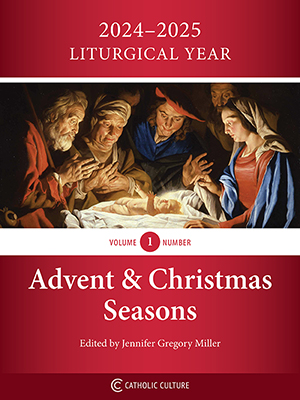Stem Cell Research: Is There a Moral Way?
For the past few years, stem cells have been very much in the news. Stem cells taken from human embryos are said to offer a dazzling hope for curing a variety of incurable diseases. But the stem cell topic is tied to serious moral problems, the most serious being the deliberate killing of human embryos in order to procure their stem cells.
Three errors
The subject of stem cell research is further complicated by the fact that its manner of presentation by the media and certain vocal politicians and movie notables has created three erroneous impressions. The first is that the human embryo is not really human and therefore has no right to continue living. The second is that stem cells taken from human embryos represent a realistic promise for combating a multitude of diseases. The third is that there are no alternative stem cell therapies that would offer similar hope.
With regard to the first point, an early stage human embryo, at first glance, may not "resemble" an adult human being, but, as Fr. Richard John Neuhaus has said about this tiny fellow: "That is exactly what a human being looks like when it is two weeks and two months old. It is what you looked like and what I looked like. It is what Jesus looked like inside his mother."
Secondly, the "hope" that people speak of has yet to be realized in the form of a single cure. Two problems persist: that of rejection by the recipient's immune system and the formation of tumors once human embryonic stem cells have been infused.
The third point warrants particular emphasis. Despite what the media and many politicians and entertainers would prefer us to believe, the plain fact is that most stem cell research uses cells obtained from sources that pose no moral problems: from adult stem tissue, umbilical cord blood, the placenta, bone marrow, muscle, fat, nerves and even the pulp of baby teeth. Dr. Catherine Verfaillie and her coworkers at the University of Minnesota believe that adult stem cells found specifically in bone marrow, peripheral blood and umbilical cord blood can "differentiate into pretty much everything that embryonic stem cells can differentiate into."
Authentic results
Her statement, indeed, is not mere theory. The American Diabetes Association Report (June 24, 2001) has documented that 15 people with serious Type 1 (juvenile) diabetes became "insulin free" after receiving adult islet cell transplants. No person with this form of diabetes has yet to benefit from human embryonic stem cells. The New England Journal of Medicine (July 13, 2000) has reported that several legally blind people can now see more clearly after receiving corneal stem cells.
The Washington Post (April 28, 2000) has reported that two children born with significant immune-system deficiencies (also known as "bubble boy" syndrome) have left their sterile environments to lead normal lives thanks to bone marrow stem cell treatment. And a young woman rendered paraplegic by an automobile accident was able to move her toes and legs after being injected with cells from her own immune system (Toronto Globe & Mail, June 15, 2001).
Literally thousands of people have benefited by receiving stem cells from a source other than that of human embryos. Yet there is no record of anyone benefiting from human embryonic stem cells. In trying to explain why so much publicity has been given to treatments that don't work, Dr. Ronald McKay, a stem cell researcher at the National Institute of Neurological Disorders and Stroke, said, "People need a fairy tale. Maybe that's not fair, but they need a storyline that's relatively simple to understand."
Michael Fumento, a well-known debunker of junk science states that adult stem cells "don't carry the moral baggage of [human] embryonic stem cells, but research with them is much further along. Unfortunately, [human] embryonic stem cell researchers have so powerful a PR machine that many influential people don't even know there is an alternative."
Dr. Peter Hollands, a stem cell biologist from Cambridge University and the scientific director of Cells for Life, said: "If we focused more on collecting umbilical cord blood from most births and storing the samples in a public bank, there would then be a suitable match for almost everyone. The 'designer babies' would then not be needed, as the cord blood banks could easily support the demand for cells for transplantation."
Not only are there alternatives to human embryonic stem cells, but they have proven to be effective. However, influential media giants such as Newsweek (October 25, 2004) and The New Yorker (October 18, 2004) claimed that the problem is between science and religion. But the real problem is between science and scientifically unenlightened people who unreasonably fear religion. The irony here is that religion — especially Catholicism — is more on the side of science than many media moguls, political figures and Hollywood celebrities. As usual, nothing prevents ignorance from masking itself in politically correct attire.
Donald DeMarco, Ph.D. is a professor of philosophy at St. Jerome's College at the University of Waterloo in Ontario, Canada and Holy Apostles Seminary in Massachusetts. For more information on this topic, visit www.ALL.org.
© American Life League, Inc.
This item 6925 digitally provided courtesy of CatholicCulture.org






